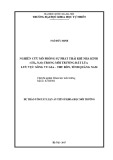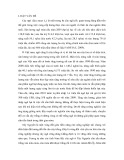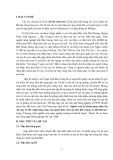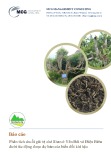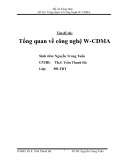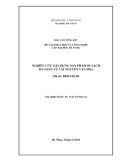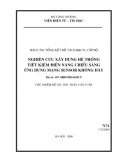
Novel isoenzyme of 2-oxoglutarate dehydrogenase is
identified in brain, but not in heart
Victoria Bunik
1,2
, Thilo Kaehne
3
, Dmitry Degtyarev
1
, Tatiana Shcherbakova
2
and Georg Reiser
4
1 Bioengineering and Bioinformatics Department, Lomonosov Moscow State University, Russia
2 Belozersky Institute of Physico-Chemical Biology, Lomonosov Moscow State University, Russia
3 Institute of Experimental Internal Medicine, Otto-von-Guericke University Magdeburg, Germany
4 Institute of Neurobiochemistry, Medical Faculty, Otto-von-Guericke University Magdeburg, Germany
The 2-oxoglutarate dehydrogenase complex (OGDHC)
is a key regulator of a branch point in the tricarboxylic
acid cycle. It belongs to the family of 2-oxo acid dehy-
drogenase complexes which comprise multiple copies
of the three catalytic enzyme components: E1, thia-
mine diphosphate (ThDP)-dependent 2-oxo acid dehy-
drogenase (in OGDHC it is E1o); E2, dihydrolipoyl
acyltransferase with the covalently bound lipoic acid
Keywords
2-oxoglutarate dehydrogenase isoenzyme;
mitochondrial membrane; multienzyme
complex; thiamine; tricarboxylic acid cycle
Correspondence
V. Bunik, Belozersky Institute of Physico-
Chemical Biology, Lomonosov Moscow
State University, Moscow 119992, Russia
Fax: +7 495 939 31 81
Tel: +7 495 939 44 84
E-mail: bunik@belozersky.msu.ru
G. Reiser, Institut fu
¨r Neurobiochemie,
Medizinische Fakulta
¨t, Otto-von-Guericke-
Universita
¨t Magdeburg, Leipziger Straße 44,
39120 Magdeburg, Germany
Fax: +49 391 67 13097
Tel:+49 391 67 13088
E-mail: georg.reiser@med.ovgu.de
(Received 17 April 2008, revised 5 July
2008, accepted 8 August 2008)
doi:10.1111/j.1742-4658.2008.06632.x
2-Oxoglutarate dehydrogenase (OGDH) is the first and rate-limiting com-
ponent of the multienzyme OGDH complex (OGDHC) whose malfunction
is associated with neurodegeneration. The essential role of this complex in
the degradation of glucose and glutamate, which have specific significance
in brain, raises questions about the existence of brain-specific OGDHC iso-
enzyme(s). We purified OGDHC from extracts of brain or heart mitochon-
dria using the same procedure of poly(ethylene glycol) fractionation,
followed by size-exclusion chromatography. Chromatographic behavior
and the insufficiency of mitochondrial disruption to solubilize OGDHC
revealed functionally significant binding of the complex to membrane.
Components of OGDHC from brain and heart were identified using nano-
high performance liquid chromatography electrospray tandem mass spec-
trometry after trypsinolysis of the electrophoretically separated proteins. In
contrast to the heart complex, where only the known OGDH was deter-
mined, the band corresponding to the brain OGDH component was found
to also include the novel 2-oxoglutarate dehydrogenase-like (OGDHL) pro-
tein. The ratio of identified peptides characteristic of OGDH and OGDHL
was preserved during purification and indicated comparable quantities of
the two proteins in brain. Brain OGDHC also differed from the heart com-
plex in the abundance of the components, lower apparent molecular mass
and decreased stability upon size-exclusion chromatography. The func-
tional competence of the novel brain isoenzyme and different regulation of
OGDH and OGDHL by 2-oxoglutarate are inferred from the biphasic
dependence of the overall reaction rate versus 2-oxoglutarate concentra-
tion. OGDHL may thus participate in brain-specific control of 2-oxogluta-
rate distribution between energy production and synthesis of the
neurotransmitter glutamate.
Abbreviations
E1, 2-oxo acid dehydrogenase; E2, dihydrolipoyl acyl transferase; E3, dihydrolipoyl dehydrogenase; nanoLC-MS ⁄MS, nano-high performance
liquid chromatography–electrospray tandem mass spectrometry; OGDH (E1o), 2-oxoglutarate dehydrogenase; OGDHC, 2-oxoglutarate
dehydrogenase complex; OGDHL, 2-oxoglutarate dehydrogenase-like protein; ROS, reactive oxygen species; ThDP, thiamin diphosphate.
4990 FEBS Journal 275 (2008) 4990–5006 ª2008 The Authors Journal compilation ª2008 FEBS







